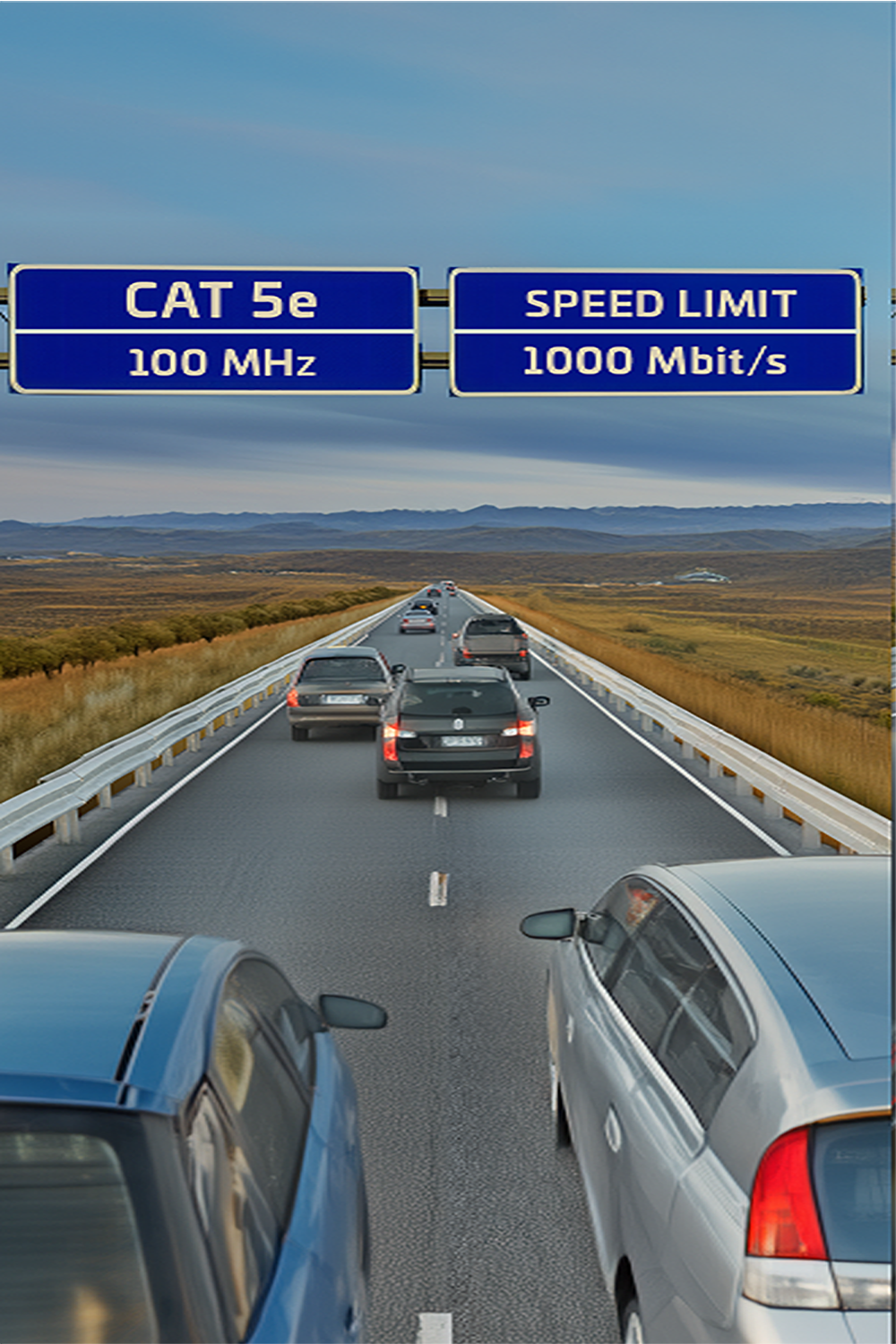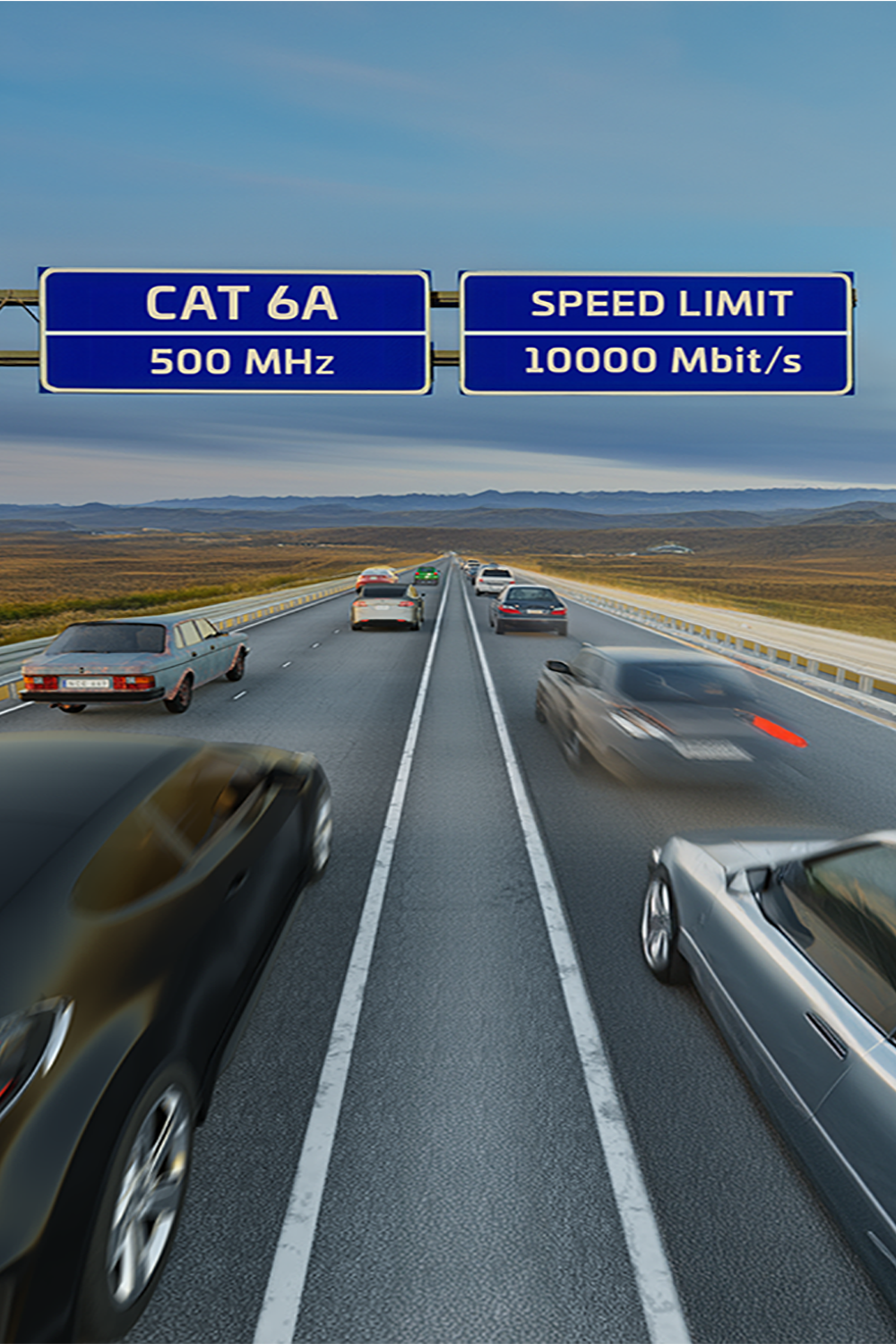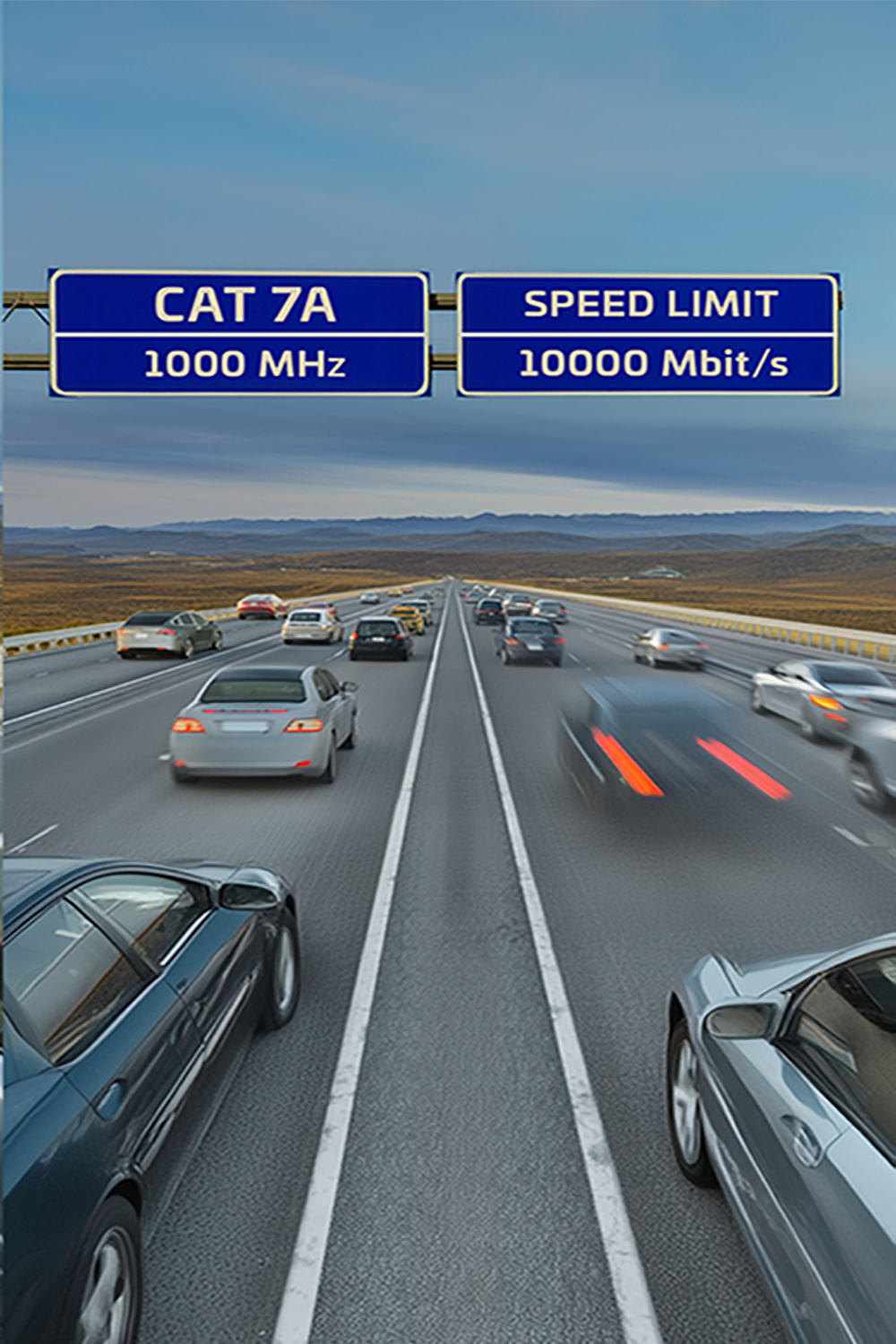
CAT categories
In the course of the rapidly increasing digital transformation in the field of event technology, the necessary connections between digital end devices, i.e. Ethernet cables, are becoming more and more significant. They are crucial components when it comes to meeting the enormous requirements of digital projects within the industry.
Ethernet cables are currently subdivided into different classes or categories (CATegories) based mainly on their bandwidth and data speed. At present the most relevant are CAT 5e, CAT 6A and CAT 7A.
„Riding the data highway”



For a basic understanding (rather simplified) of what CAT classes are all about, let’s imagine a highway. The higher the CAT class, the wider or "multi-lane" the highway is in the figurative sense (bandwidth in megahertz MHz = electromagnetic oscillations or frequency) the faster "vehicles", i.e. in this case “data”, can travel on it (= data transmission speed in megabits per second Mbit/s).
This means that data can be transmitted with
- Class CAT 5e cables within a bandwidth of 100 MHz at a speed of 1000 Mbit/s,
- class CAT 6A within a bandwidth of 500 MHz with a speed of 10,000 Mbit/s,
- and with class CAT 7A cables within a bandwidth of 1,000 MHz with a speed of 10,000 Mbit/s.
[Noteworthy: CAT 7A has the same speed as CAT 6A, "only" the bandwidth is higher i.e. that the "highway" is wider and can accommodate more "traffic", which, however, moves within the same "speed limit" - one speaks of a higher "feed-through speed" when you use CAT 7A cables].]
What then – to put it succinctly -"makes" an Ethernet cable a CAT cable of a specific class/category?
The interaction of various factors, such as the overall design of the individual components and the materials used, is crucial when determining the respective category. Decisive for the ultimate performance of the cables are in particular issues such as
the impact of the AWG value on the performance characteristics
the shielding (shielded or unshielded Ethernet cable)
the type of conductor (solid vs. stranded wire cables)
the insulator and type of insulator
Please note: selecting the correct cable for an application requires careful consideration of a variety of factors including AWG ratings, shielding, insulation, cable length, data class and application. In order to ensure signal integrity and optimum system performance, it is essential to consider the factors relevant to the application.